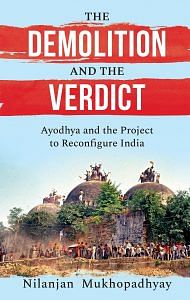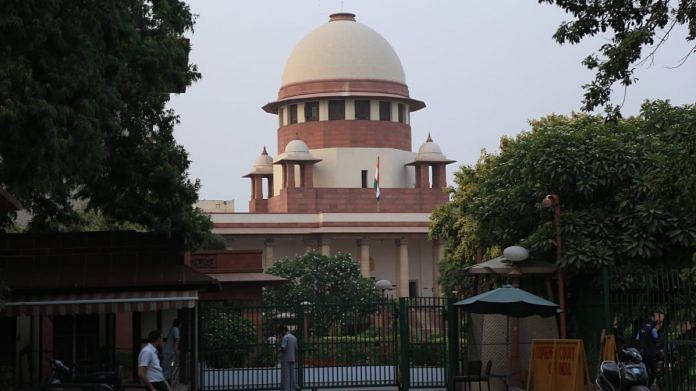The objective of the petitioners claiming to represent Hindu sentiments indeed came a long way from 1885, when Mahant Raghubar Das demanded that he be allowed to build a temple over the Ram Chabutra, to the fateful day in November 2019, when the five-judge bench of the Supreme Court ruled in favour of the Hindu parties and directed the Centre in one voice to facilitate establishment of a board of trustees to build a Ram temple that would sprawl beyond the ‘inner and outer courtyards’ of the contested site. It was forgotten that the original demand was not for such a gargantuan-sized piece of land. It was during the course of the political agitation launched in 1985, to secure the ‘liberation’ of Ram Janmabhoomi, that the goal of the movement was expanded—from unlocking the shut gates to handing over the disputed shrine to self-styled representatives of Hindus so that a Ram temple could be built.
Additions or modifications to the charter of demands in the course of a political agitation are understandable, but when these get unquestioningly accepted by courts, they draw attention to what eighteenth-century Irish composer Kana O’Hara is attributed to have said: ‘When the judgement’s weak, the prejudice is strong.’
In the course of seemingly endless hearings at various levels of the judiciary, and in prodigiously written verdicts, considerable time and space were accorded to the issue of ‘barred by limitation’, a statutory creation of law, based on the principle of diligence or a reasonable time to seek redressal of grievance—the claim has to be formally staked before a court within a stipulated time. Even the Supreme Court in its final verdict upheld the Allahabad High Court’s conclusion that the Nirmohi Akhara’s suit was time-barred because its suit was governed by Article 120 of the Limitation Act, 1908, that was in force when the case was filed in 1959. Providing reason for its rejection of the Nirmohi Akhara suit, the highest court argued that its ruling emerged from the Akhara’s claim of being a shebait (a person or institution which serves a deity) as a result of which it was governed by the aforesaid article that specifies the limitation period to six years, and not twelve years as under Article 142 that permits claims to be made before expiry of twelve years. The Sunni Central Waqf Board’s suit was filed days before the expiry in December 1961 and thereby maintainable.
Also read: Verdict on a Saturday, addendum, judges’ dinner — How SC’s Ayodhya judgment saw many firsts
It is well known that judges often disagree and are seldom unanimous in their conclusions. The Supreme Court judgement on the Ayodhya civil case raised eyebrows as the five judges were in almost complete agreement. In addition, the pronouncement ‘broke three conventions’ that the apex court had followed over seven decades. Verdicts always carry a ‘byline’ and the ‘author’ reads it alone even though others may have the same opinion. But this epochal verdict did not carry a name and was read out by the Chief Justice of India, although legal eagles, adept at decoding writing styles of judges, fathomed that this was penned by Justice D.Y. Chandrachud. Additionally, the judgement carried an ‘addenda’, which too was anonymous. It was also not difficult to comprehend, by little more than ‘comparison of the fonts used by judges in their judgements’, that the 116-page addenda was written by Justice Ashok Bhushan. Peculiarly, this had the characteristics of a comprehensive judgement and could well have been appended as a concurring judgement.
These decisions were possibly driven by political motivations or compulsions. Justice Gogoi spoke on behalf of his colleagues that they ‘decided to speak to the nation in one voice on such an important and historic issue’. Justice Bhushan was thereby ‘prevailed upon’ to add the new concept to an apex court verdict by terming his text, offering separate reasons for arriving at the same conclusion and relief granted, as ‘addenda’. Yet, the question remained:
By not identifying themselves, did the judges hide behind anonymity?
At the onset, the addenda addressed the question ‘whether disputed structure is the holy birthplace of Lord Ram as per the faith, belief and trust of the Hindus’. It concluded that ‘faith and belief of Hindus since prior to been that Janmaasthan of Lord Ram is the place where Babri Mosque has been constructed’. In their collective verdict, the judges spoke in one voice undoubtedly but in the process ended up addressing only one community and their aspirations. If what the Chief Justice stated actually implied that the judges had unanimously agreed to be mindful of the majoritarian ‘societal’ sense on the issue, it carries worrying portents not just for the independence of judiciary, but also for the future character of the republic.
 Excerpted from The Demolition and the Verdict: Ayodhya and the Project to Reconfigure India by Nilanjan Mukhopadhyay. Published by Speaking Tiger Books, 2021.
Excerpted from The Demolition and the Verdict: Ayodhya and the Project to Reconfigure India by Nilanjan Mukhopadhyay. Published by Speaking Tiger Books, 2021.




